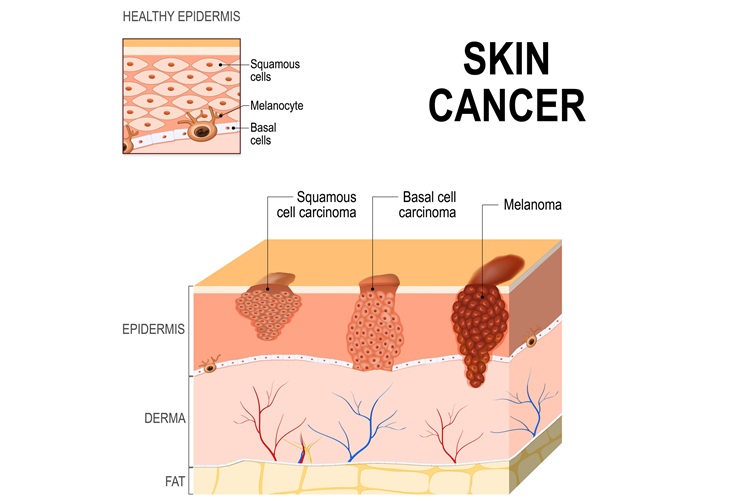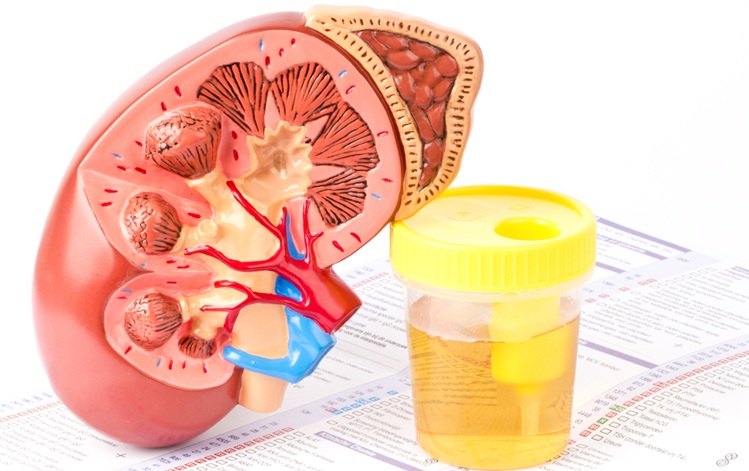COVID-19 Lung Damage Caused by Persistence of Abnormal Cells
|
By LabMedica International staff writers Posted on 19 Nov 2020 |

Image: Histological features of COVID-19 lungs (Photo courtesy of the University of Trieste).
Several uncertainties still relate to the involvement of other organs in COVID-19. Besides indirect multi-organ injury, a few reports have suggested the possibility of direct injury caused by viral replication in brain, heart and kidney.
Over the last couple of months a few studies have explored the lung pathology caused by COVID-19 infection in a small number of patients. The pattern that has emerged is that COVID-19 lung disease causes diffuse alveolar damage (DAD) which is also present in other conditions of acute respiratory distress syndrome (ARDS), including SARS.
A team of Medical Scientists at the University of Trieste (Trieste, Italy) analyzed the organs of 41 patients who died of COVID-19 at the University Hospital of Trieste. The team took lung, heart, liver, and kidney samples to examine the behavior of the virus. Of the 41 patients, six required intensive care, while 35 were hospitalized in either other hospital units or local nurseries until death. The average age of patients was 77 and 84 years for males and females, respectively. Hypertension, chronic cardiac disease, dementia, diabetes and cancer were the most common comorbidities. All patients eventually died of clinical acute respiratory distress syndrome.
At pathological examination, the investigators found that all cases exhibited lung damage and the lungs appeared congested at macroscopic examination. Meanwhile, histological analysis of all cases revealed gross destruction of the normal lung architecture, consistent with a condition of diffuse alveolar damage with edema, intra-alveolar fibrin deposition with hyaline membranes and hemorrhage. This was accompanied by occlusion of alveolar spaces due to cell delamination. Loss of cellular integrity was also confirmed by the presence of karyorrhexis, indicative of ongoing cellular death.
Further, in situ RNA hybridization for the detection of the SARS-CoV-2 genome indicated that the alterations in the lung were concomitant with persistent viral infection of pneumocytes and endothelial cells. RNA-positive pneumocytes were found to be largely present in the lungs of 10 of 11 tested individuals. The team said presence of abundant cytoplasmic RNA signals and expression of the Spike protein in the lungs after 30-40 days from diagnosis in the study suggests ongoing replication and postulates a continuous pathogenetic role of viral infection.
The scientists also noted that also noted the presence of anomalous epithelial cells among the cases which were characterized by abnormally large cytoplasm and, very commonly, by the presence of bi- of multi-nucleation. Presence of these dysmorphic cells was detected in 87% of patients. They added that the dysmorphic cells very often showed features of syncytia, characterized by several nuclei with an ample cytoplasm surrounded by a single plasma membrane. Most of these syncytia-forming, dysmorphic cells were bona fide pneumocytes.
The authors concluded that COVID-19 is a unique disease characterized by extensive lung thrombosis, long-term persistence of viral RNA in pneumocytes and endothelial cells, along with the presence of infected cell syncytia. Several of COVID-19 features might be consequent to the persistence of virus-infected cells for the duration of the disease. The study was published on November 3, 2020 in the journal EBioMedicine.
Related Links:
University of Trieste
Over the last couple of months a few studies have explored the lung pathology caused by COVID-19 infection in a small number of patients. The pattern that has emerged is that COVID-19 lung disease causes diffuse alveolar damage (DAD) which is also present in other conditions of acute respiratory distress syndrome (ARDS), including SARS.
A team of Medical Scientists at the University of Trieste (Trieste, Italy) analyzed the organs of 41 patients who died of COVID-19 at the University Hospital of Trieste. The team took lung, heart, liver, and kidney samples to examine the behavior of the virus. Of the 41 patients, six required intensive care, while 35 were hospitalized in either other hospital units or local nurseries until death. The average age of patients was 77 and 84 years for males and females, respectively. Hypertension, chronic cardiac disease, dementia, diabetes and cancer were the most common comorbidities. All patients eventually died of clinical acute respiratory distress syndrome.
At pathological examination, the investigators found that all cases exhibited lung damage and the lungs appeared congested at macroscopic examination. Meanwhile, histological analysis of all cases revealed gross destruction of the normal lung architecture, consistent with a condition of diffuse alveolar damage with edema, intra-alveolar fibrin deposition with hyaline membranes and hemorrhage. This was accompanied by occlusion of alveolar spaces due to cell delamination. Loss of cellular integrity was also confirmed by the presence of karyorrhexis, indicative of ongoing cellular death.
Further, in situ RNA hybridization for the detection of the SARS-CoV-2 genome indicated that the alterations in the lung were concomitant with persistent viral infection of pneumocytes and endothelial cells. RNA-positive pneumocytes were found to be largely present in the lungs of 10 of 11 tested individuals. The team said presence of abundant cytoplasmic RNA signals and expression of the Spike protein in the lungs after 30-40 days from diagnosis in the study suggests ongoing replication and postulates a continuous pathogenetic role of viral infection.
The scientists also noted that also noted the presence of anomalous epithelial cells among the cases which were characterized by abnormally large cytoplasm and, very commonly, by the presence of bi- of multi-nucleation. Presence of these dysmorphic cells was detected in 87% of patients. They added that the dysmorphic cells very often showed features of syncytia, characterized by several nuclei with an ample cytoplasm surrounded by a single plasma membrane. Most of these syncytia-forming, dysmorphic cells were bona fide pneumocytes.
The authors concluded that COVID-19 is a unique disease characterized by extensive lung thrombosis, long-term persistence of viral RNA in pneumocytes and endothelial cells, along with the presence of infected cell syncytia. Several of COVID-19 features might be consequent to the persistence of virus-infected cells for the duration of the disease. The study was published on November 3, 2020 in the journal EBioMedicine.
Related Links:
University of Trieste
Latest Molecular Diagnostics News
- Urine Test Detects Early Stage Pancreatic Cancer
- Genomic Test Could Reduce Lymph Node Biopsy Surgery in Melanoma Patients
- Urine Test Could Replace Painful Kidney Biopsies for Lupus Patients
- Blood Test Guides Post-Surgical Immunotherapy for Muscle-Invasive Bladder Cancer
- Mitochondrial DNA Mutations from Kidney Stressors Could Predict Future Organ Decline
- Blood Test Could Predict Bariatric Surgery Outcomes in Teenagers
- ctDNA Blood Test to Help Personalize Postsurgical Colon Cancer Treatment
- AI Powered Blood Test Predicts Suicide Risk in Bipolar Patients
- DNA Sensor Enables Molecular Detection from Single Blood Drop
- DNA-Powered Test Accurately Detects E. Coli Lookalike Bacteria
- World’s Fastest DNA Sequencing Technique to Revolutionize NICU Genomic Care
- Blood Test Uses Cell-Free DNA to Detect ALS Faster and More Accurately
- Multi-Cancer Early Detection Blood Test Increases Cancer Detection
- Portable Label-Free Device Tracks Alzheimer's Disease in Real Time
- Liquid Biopsy Test Enables Early Detection of ICI-Related Myocarditis
- Rapid POC Diagnostic Test Detects Asymptomatic Malaria Cases
Channels
Clinical Chemistry
view channel
VOCs Show Promise for Early Multi-Cancer Detection
Early cancer detection is critical to improving survival rates, but most current screening methods focus on individual cancer types and often involve invasive procedures. This makes it difficult to identify... Read more
Portable Raman Spectroscopy Offers Cost-Effective Kidney Disease Diagnosis at POC
Kidney disease is typically diagnosed through blood or urine tests, often when patients present with symptoms such as blood in urine, shortness of breath, or weight loss. While these tests are common,... Read moreMolecular Diagnostics
view channel
Urine Test Detects Early Stage Pancreatic Cancer
Pancreatic cancer remains among the hardest cancers to detect early. In the UK, around 10,000 people are diagnosed each year, but only 5% survive beyond five years. Late diagnosis is a major factor—more... Read more
Genomic Test Could Reduce Lymph Node Biopsy Surgery in Melanoma Patients
Accurately determining whether melanoma has spread to the lymph nodes is crucial for guiding treatment decisions, yet the standard procedure—sentinel lymph node biopsy—remains invasive, costly, and unnecessary... Read moreHematology
view channel
Viscoelastic Testing Could Improve Treatment of Maternal Hemorrhage
Postpartum hemorrhage, severe bleeding after childbirth, remains one of the leading causes of maternal mortality worldwide, yet many of these deaths are preventable. Standard care can be hindered by delays... Read more
Pioneering Model Measures Radiation Exposure in Blood for Precise Cancer Treatments
Scientists have long focused on protecting organs near tumors during radiotherapy, but blood — a vital, circulating tissue — has largely been excluded from dose calculations. Each blood cell passing through... Read more
Platelets Could Improve Early and Minimally Invasive Detection of Cancer
Platelets are widely recognized for their role in blood clotting and scab formation, but they also play a crucial role in immune defense by detecting pathogens and recruiting immune cells.... Read more
Portable and Disposable Device Obtains Platelet-Rich Plasma Without Complex Equipment
Platelet-rich plasma (PRP) plays a crucial role in regenerative medicine due to its ability to accelerate healing and repair tissue. However, obtaining PRP traditionally requires expensive centrifugation... Read moreImmunology
view channel
Blood-Based Liquid Biopsy Model Analyzes Immunotherapy Effectiveness
Immunotherapy has revolutionized cancer care by harnessing the immune system to fight tumors, yet predicting who will benefit remains a major challenge. Many patients undergo costly and taxing treatment... Read more
Signature Genes Predict T-Cell Expansion in Cancer Immunotherapy
Modern cancer immunotherapies rely on the ability of CD8⁺ T cells to rapidly multiply within tumors, generating the immune force needed to eliminate cancer cells. However, the biological triggers behind... Read moreMicrobiology
view channel
Fast Noninvasive Bedside Test Uses Sugar Fingerprint to Detect Fungal Infections
Candida bloodstream infections are a growing global health threat, causing an estimated 6 million cases and 3.8 million deaths annually. Hospitals are particularly vulnerable, as weakened patients after... Read more
Rapid Sepsis Diagnostic Device to Enable Personalized Critical Care for ICU Patients
Sepsis is a life-threatening condition that occurs when the body’s response to infection spirals out of control, damaging organs and leading to critical illness. Patients often arrive at intensive care... Read moreTechnology
view channel
Cell-Sorting Device Uses Electromagnetic Levitation to Precisely Direct Cell Movement
Sorting different cell types—such as cancerous versus healthy or live versus dead cells—is a critical task in biology and medicine. However, conventional methods often require labeling, chemical exposure,... Read more
Embedded GPU Platform Enables Rapid Blood Profiling for POC Diagnostics
Blood tests remain a cornerstone of medical diagnostics, but traditional imaging and analysis methods can be slow, costly, and reliant on dyes or contrast agents. Now, scientists have developed a real-time,... Read moreIndustry
view channel
Puritan Medical Products Showcasing Innovation at AMP2025 in Boston
Puritan Medical Products (Guilford, ME, USA), the world’s most trusted manufacturer of swabs and specimen collection devices, is set to exhibit at AMP2025 in Boston, Massachusetts, from November 11–15.... Read more
Advanced Instruments Merged Under Nova Biomedical Name
Advanced Instruments (Norwood, MA, USA) and Nova Biomedical (Waltham, MA, USA) are now officially doing business under a single, unified brand. This transformation is expected to deliver greater value... Read more









 assay.jpg)










